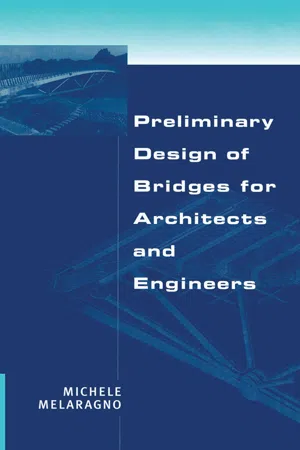
This is a test
- 552 pages
- English
- ePUB (mobile friendly)
- Available on iOS & Android
eBook - ePub
Preliminary Design of Bridges for Architects and Engineers
Book details
Book preview
Table of contents
Citations
About This Book
Focusing on the conceptual and preliminary stages in bridge design, this book addresses the new conceptual criteria employed when evaluating project proposals, considering elements from architectural aspects and structural aesthetics to environmental compatibility.;College or university bookstores may order five or more copies at a special student price. Price is available on request.
Frequently asked questions
At the moment all of our mobile-responsive ePub books are available to download via the app. Most of our PDFs are also available to download and we're working on making the final remaining ones downloadable now. Learn more here.
Both plans give you full access to the library and all of Perlego’s features. The only differences are the price and subscription period: With the annual plan you’ll save around 30% compared to 12 months on the monthly plan.
We are an online textbook subscription service, where you can get access to an entire online library for less than the price of a single book per month. With over 1 million books across 1000+ topics, we’ve got you covered! Learn more here.
Look out for the read-aloud symbol on your next book to see if you can listen to it. The read-aloud tool reads text aloud for you, highlighting the text as it is being read. You can pause it, speed it up and slow it down. Learn more here.
Yes, you can access Preliminary Design of Bridges for Architects and Engineers by Michele Melaragno in PDF and/or ePUB format, as well as other popular books in Technology & Engineering & Engineering General. We have over one million books available in our catalogue for you to explore.
Information
1
BRIDGE GENERALITIES
FROM THE HISTORICAL INVENTORY OF BRIDGES
In approaching the subject of modern bridges, it is impossible to start without referring to the time frame that describes the historical events through which bridges have developed. The literature of the history of bridges is prolific and it is beneficial to trace the main historical sequence of events in the development of bridge design.
The crossing of barriers of different types requires structures limited only by the availability of materials and by the technological knowledge of the builders. However, another factor that played a major role in the development of bridges was necessity. Thus during warfare conditions the power of organized armies often provided the required energy for accomplishing major engineering tasks that were not possible in peace time. The crossing of rivers by bridges found the most spectacular applications during war. Large applications of bridges built in ancient times refer, for example, to those built during the Persian Wars by Xerxes in 480 BC over the Hellespont; which measures 1.5 kilometers long. Most famous, of course, is the reference to the bridges built by Caesar during the Gallic Wars in 55 BC over the Rhine River (Figure 1-1). This bridge more than any other from ancient times stands out from the pages of history books for its audacity and its unbelievable execution. Approximately 400 meters long, the structure was erected in record time. In fact, it seems that only ten days elapsed between the time that the order was given and the time when the last man of the Roman legions crossed the river; this included the cutting of the trees, the shaping of the members, the building of the connections, and the erection of the whole structure amid the strong currents of the water course. Obviously the engineering knowledge of Roman legionnaires and the organization of the work had unprecedented standards. Part of their success was also to be found in the exceptional, specialized equipment that the army always had at its disposal, including a variety of forged bronze hardware that allowed for the connection of timber members used for the construction of bridges.

Figure 1-1 Caesar’s bridge over the Rhine River (from the reconstruction drawing by Andrea Palladio, from Four Books of Architecture, Book III, chapter VI, plate 2).
Besides military applications in the old world, masonry bridges for civil structures were also extremely popular in the Roman culture due mostly to the widespread use of arches and vaults. The most famous of these bridges, both in Rome, are the remnants of the Sublicio, as well as Ponte Milvio, built in 110 B.C., which is still in perfect condition, carrying vehicular loads and pedestrian traffic. This is the bridge that gave the name to the battle between Constantine and Massentius, which the former won, resulting in the split of the Roman empire, the recognition of Christianity, and the fall of the Roman civilization. With the fall of the empire and the surge of the Dark Ages, the art of building bridges did not die completely, but survived somehow through the cultural decline.
Toward the Middle Ages, during which the evolution of bridges hardly progressed, a new prototype eventually emerged in Florence: the “Ponte Vecchio” over the Amo River. Rebuilt several times after collapses due to river floods, it was eventually built in its present shape in 1345. Its three arches departed totally from the semicircular Roman prototypes with a much lower rise-to-span ratio.
Another bridge of significant relevance, built originally in 1357 in Prague and eventually restored in 1432, is the Karlsbrucke Bridge named after King Charles IV. Its length measures 515.76m and includes sixteen arches and particularly large piers; its width measures ten meters and its longitudinal axis changes direction along its length.
Passing from the Middle Ages to the Renaissance, the development of bridges did not produce any major changes except that some masonry bridges, rather than using the semicircular Roman arch, employed arches with a lower rise-to-span ratio. The most significant of the Renaissance arches in Europe is the Ponte Della Trinita, built in 1567 in Florence, that included three elliptical arches with a rise-to-span ratio of 1:5, followed by a few other examples in Florence and Paris. Other examples of bridges in the Renaissance are those few truss-type wooden structures designed by Palladio and described in his The Four Books of Architecture. Another landmark in the development of the bridge throughout the Renaissance is the Rialto Bridge in Venice, consisting of a single arch crossing the Grand Canal and designed by Antonio da Ponte in 1577.
The bridge architecture of Andrea Palladio
The first representative of architecture within the context of bridge design is officially Andrea Palladio, or Andrea Di Pietro della Gondola (1508-1580), or his work includes the design of several bridges. His participation in the development of bridge design is best represented by his writings, The Four Books of Architecture, first published in Venice in the year 1570.
More specifically, Book Three, dedicated mostly to bridges, includes 21 chapters, some of which relate specifically to bridge structures: Chapter IV: Of what ought to be observed in the building of bridges, and of the site that ought to be chosen; Chapter V: Of Wooden Bridges, and of the advertencies which ought to be had in the building of them; Chapter VI: Of the bridge directed by Julius Caesar over the Rhine; Chapter VII: Of the Bridge of Cismone; Chapter VIII: Of three other inventions, according to which wooden bridges may be made, without fixing any posts in the water; Chapter IX: Of the Bridge of Bassano; Chapter X: Of stone bridges, and what ought to be observed in the building of them; Chapter XI:Of some celebrated bridges built by the ancients, and of the designs of the bridge of Rimino; Chapter XII: Of the Bridge of Vicenza, that is over the Bacchiglione; Chapter XIII: Of a stone bridge of my invention; Chapter XIV: Of another bridge of my invention; Chapter XV: Of the Bridge of Vicenza, that is upon the Rerone. From this work, the illustrations that accompany his writings, speak more clearly of themselves with a pristine clarity that characterized the drawings made by his own hand. From the large collection of drawings illustrating his bridges, few have been selected to be included in this context (Figure 1-2 Figure 1-3 Figure 1-4 Figure 1-5 Figure 1-6 Figure 1-7 Figure 1-8 Figure 1-9 Figure 1-10).

Figure 1-2 Bridge of Cismone (from Four Books of Architecture, by Andrea Palladio, Book III, chapter VII, plate 3).
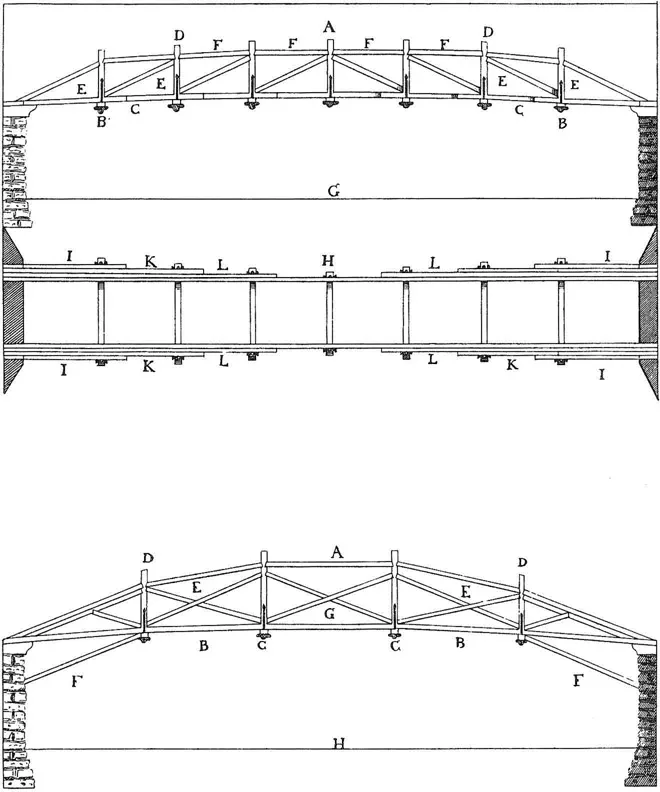
Figure 1-3 Drawings of bridges (from Four Books of Architecture, by Andrea Palladio, Book III, chapter VIII, plate 4).
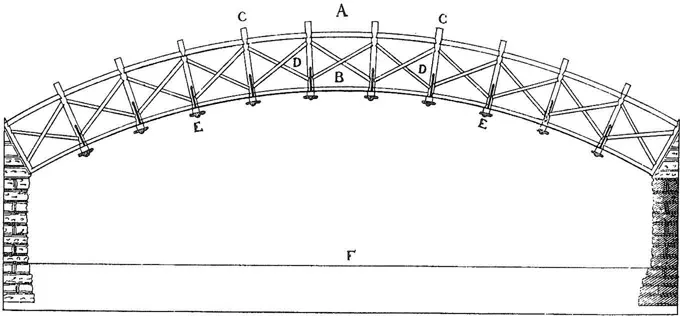
Figure 1-4 Drawings of bridges (from Four Books of Architecture, by Andrea Palladio, Book 111, chapter VIII, plate 5).
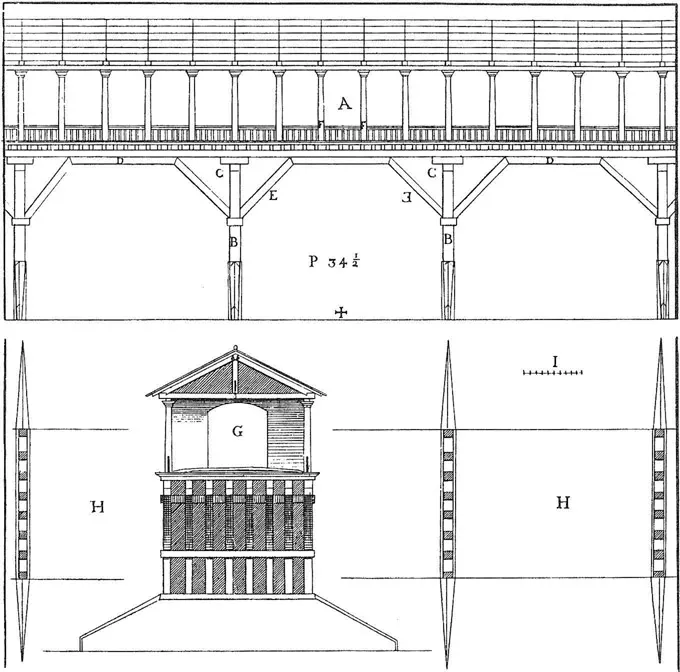
Figure 1-5 Bridge of Bassano (from Four Books of Architecture, by Andrea Palladio, Book III, chapter IX, plate 6).
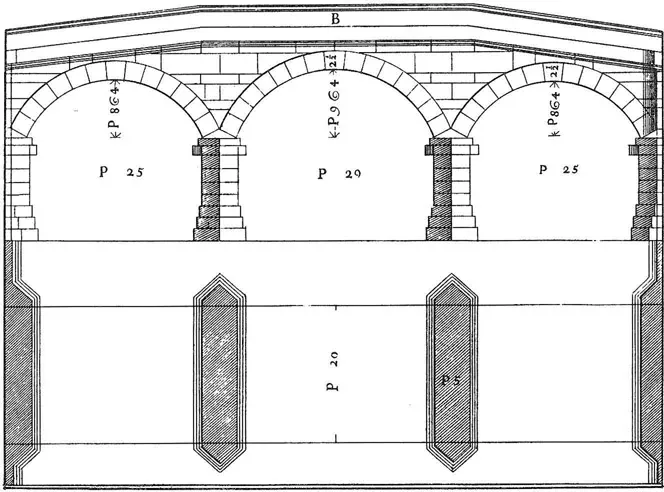
Figure 1-6 Bridge over the Bacchiglione River of Vicenza (from Four Books of Architecture, by Andrea Palladio, Book 111, chapter XII, plate 8).
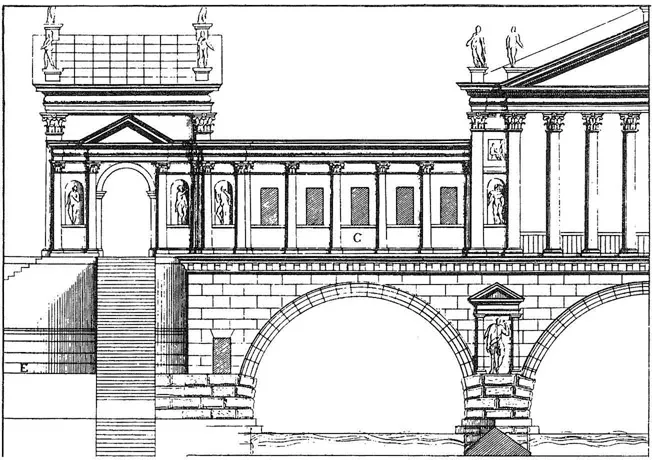
Figure 1-7a Stone bridge of Palladio’s invention, elevation (from Four Books of Architecture, by Andrea Palladio, Book III, chapter XIII, plate 9).

Figure 1-7b Stone bridge of Palladio’s invention, plan (from Four Books of Architecture, by Andrea Palladio, Book III, chapter XIII, plate 9).
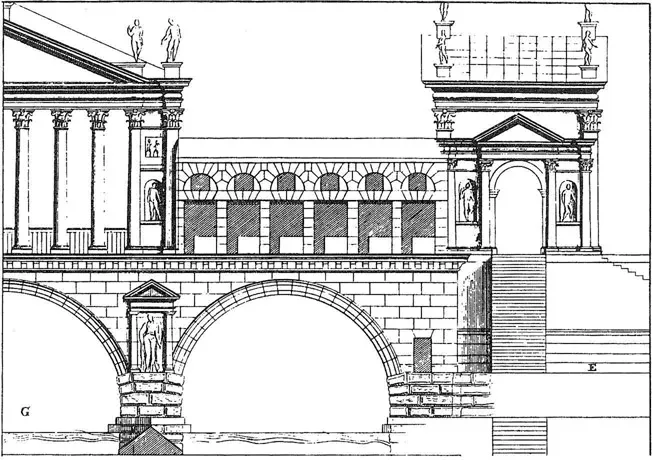
Figure 1-8a Stone bridge of Palladio’s invention, elevation (from Four Books of Architecture, by Andrea Palladio, Book III, chapter XIII, plate 10).

Figure 1-8b Stone bridge of Palladio’s invention, plan (from Four Books of Architecture, by Andrea Palladio, Book III, chapter XIII, plate 10).
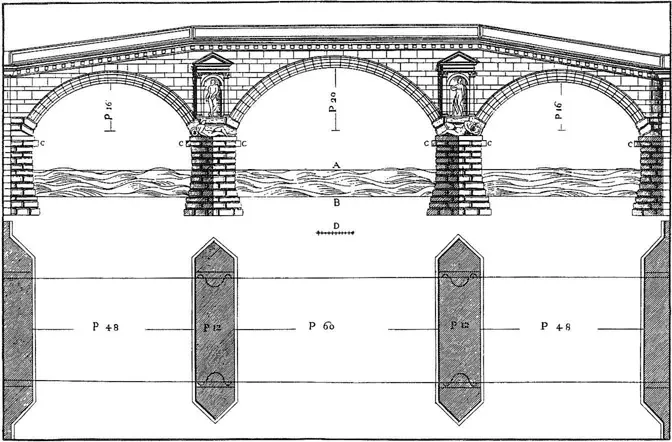
Figure 1-9 Stone bridge of Palladio’s Invention (from Four Books of Architecture, by Andrea Palladio, Book III, chapter XIV, plate 11).
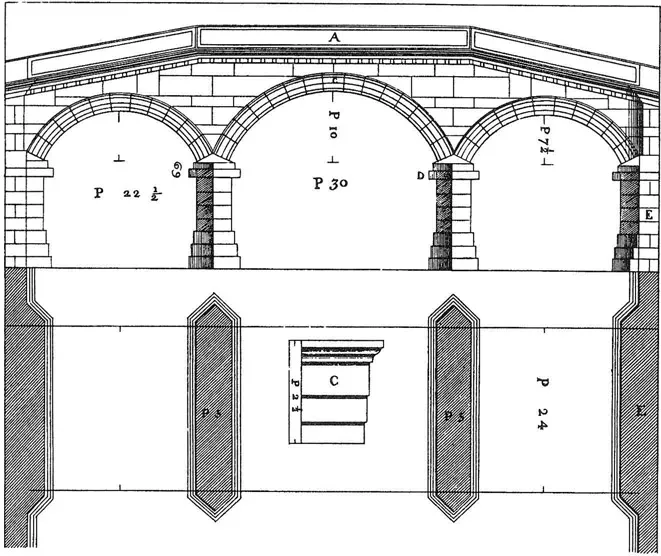
Figure 1-10 Bridge at Vicenza over the Rerone (from Four Books of Architecture, by Andrea Palladio, Book 111, chapter XV, plate 12).
Bridge development
The development of bridges in the New World required the construction of extremely long spans over numerous large bodies of water. Such spans were much larger than those built in European countries and required an audacity not proven before, especially in Europe, where building standards were protected by conservative engineering rules. Among the various structural systems that could promise the construction of long-span bridges, trusses were the most visible choice. Even so, spans that had been bridged were much shorter than those required of the new bridges. Therefore, in the new continent where rules and regulations were practically nonexistent, many builders depended on intuition rather than scientific knowledge. Attempting new design conceptions this way caused several major disasters, but eventually they succeeded in doing what was considered impossible. In conclusion, the new American truss bridges, initially built of wood and eventually of steel, established a new era in the development of the truss bridges.
Among these pioneer bridge builders was Timothy Palmer, by trade a carpenter. He was the builder of the Essex-Merri mac Bridge over the Essex-Merrimac River and the Pisca Tagua Bridge at Portsmouth, NH using the covered timber truss that protected its structural members from weather deterioration. Another notable American pioneer bridge builder in this first period was Louis Wemwag. With the development of engineering science in America, a second generation of bridge builders included such names as Ithiel Town, Stephen Long, William Howe, Thomas Pratt, Squire Whipple, Wendell Bollman, and Albert Fink.
The glamour of the suspension bridge was slow to appear, after a beginning of small applications both in Europe and in North America, partly because of the limitations of wrought iron chains and bars first used prior to the use of steel strands, and partly due to the limitations of engineering knowledge. Several suspension bridges were eventually built with varying success by different designers, including Charles Ellet. However, the first formidable suspension bridge of long span still standing today was the Brooklyn Bridge connecting Brooklyn with Manhattan over the East River. The Brooklyn Bridge covered a span of 386m (1, 268 ft). Designed by John Roebling who had previously completed in 1866 the Cincinnati Bridge that spanned 322m (1,057 ft). While John was the designer of the Brooklyn Bridge, his son Washington Roebling built it after the death of his father...
Table of contents
- Cover
- Half Title
- Series Page
- Title Page
- Copyright Page
- Dedication Page
- Preface
- Acknowledgments
- Contents
- Chapter 1: Bridge Generalities
- Chapter 2: Preliminary Design
- Chapter 3: Computer Software for Bridge Design
- Chapter 4: Bridge Aesthetics
- Chapter 5: Rehabilitation and Improvements of Bridges
- Chapter 6: Fundamentals of Design for Structural Engineers
- Appendix 1: An Inventory of Notable Bridges
- Appendix 2: Bridge Design Standards
- Appendix 3: Highway Live Loads
- Appendix 4: Standard Specifications for Railroad Bridges by Area
- Appendix 5: Computer Software Sources
- Appendix 6: Bridge Organizations
- Appendix 7: Bridge Proposalannouncements
- Appendix 8: Announcements of Consulting Design Contracts
- Appendix 9: Bridge Design Awards
- Appendix 10: Bridge Beam Design Theory
- Appendix 11: Homage to Two Legendary Figures
- Appendix 12: Preliminary Truss Selection
- Appendix 13: Bridge Inspection Documents
- Appendix 14: Cables and Wire Ropes
- Appendix 15: U.S. Coast Guard Permit Application Forms for Bridge Construction
- General Bibliography
- Index